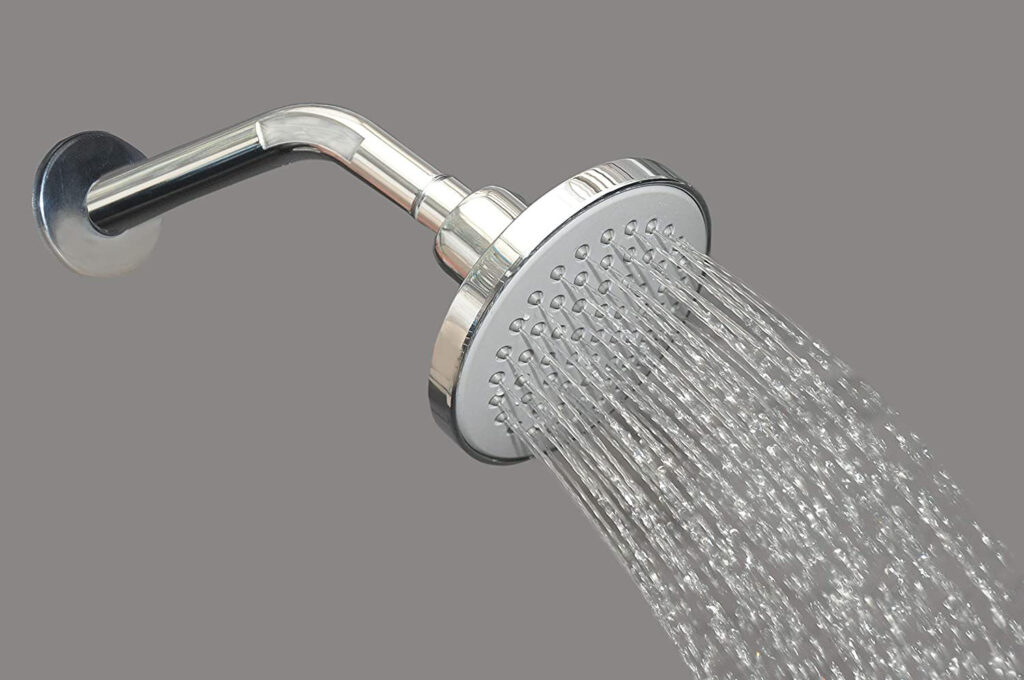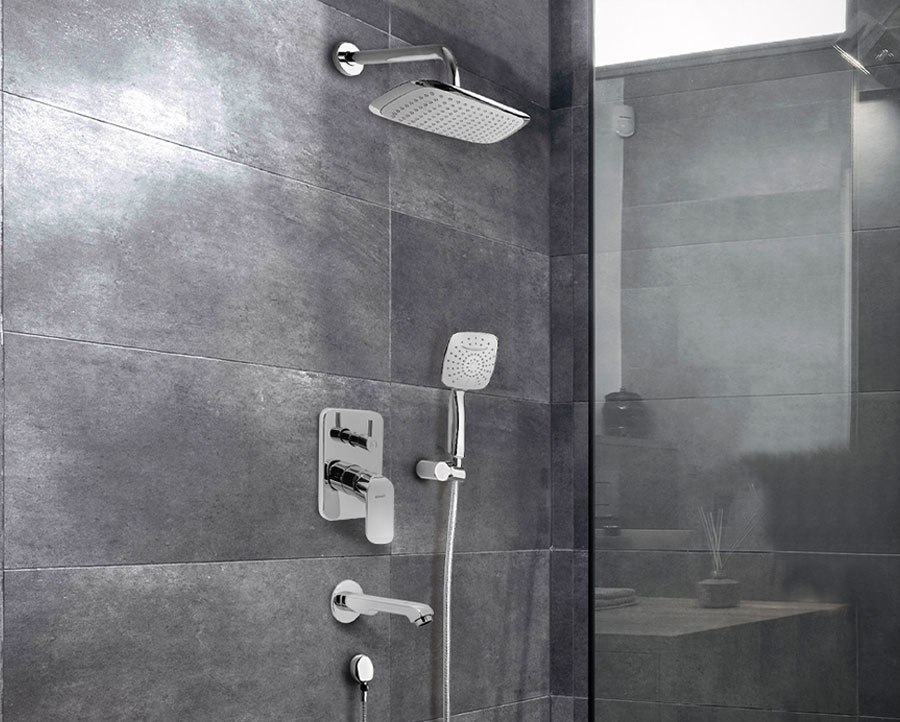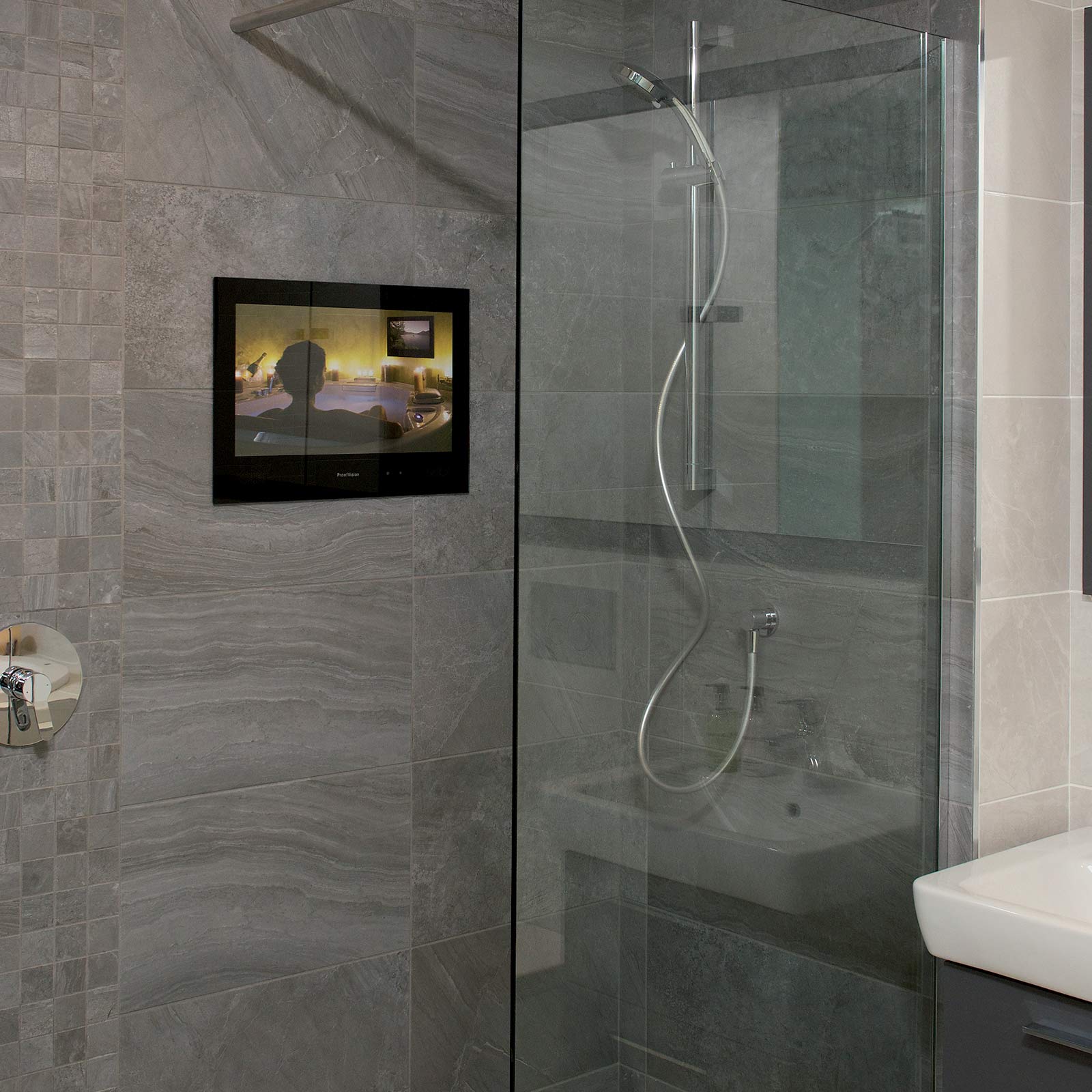Types of Bathroom Shower Fittings

A bathroom shower fitting is an essential part of any modern bathroom, offering a variety of functions and styles to suit individual preferences. Understanding the different types of shower fittings available in the UK can help you choose the perfect one for your needs and budget.
Shower Heads
Shower heads are the primary component of any shower system, responsible for delivering water to the user. There are numerous styles and features available, each offering unique benefits.
- Fixed Shower Heads: These are the most common type of shower head, featuring a stationary design that remains fixed to the wall or ceiling. They are typically simple and affordable, offering a consistent spray pattern.
- Handheld Shower Heads: Handheld shower heads offer greater flexibility, allowing users to direct the water flow as needed. They are attached to a hose, making it easy to reach different parts of the body and clean the shower area.
- Rainfall Shower Heads: These shower heads create a luxurious, cascading shower experience, simulating a gentle rain shower. They often feature larger diameters than standard shower heads, delivering a wider and more immersive water flow.
- Dual Shower Heads: Combining the features of both fixed and handheld shower heads, dual shower heads provide versatility and convenience. They typically consist of a fixed shower head for a standard shower experience and a handheld shower head for targeted cleaning or a more focused spray.
- Power Shower Heads: Power shower heads are designed to deliver a more powerful and invigorating shower experience. They often incorporate a pump or other mechanisms to increase water pressure, creating a more intense and refreshing shower.
Shower Valves
Shower valves control the flow of water to the shower head, regulating temperature and pressure. Different types of shower valves offer various features and benefits.
- Thermostatic Shower Valves: Thermostatic valves maintain a consistent water temperature, preventing sudden temperature fluctuations. They feature a built-in thermostat that monitors water temperature and adjusts the flow accordingly, ensuring a comfortable and safe shower experience.
- Pressure-Balancing Shower Valves: These valves maintain a consistent water pressure, preventing fluctuations in flow due to changes in water pressure elsewhere in the house. They are particularly beneficial in homes with fluctuating water pressure, ensuring a consistent shower experience regardless of other water usage.
- Mixer Shower Valves: Mixer valves allow users to adjust both the temperature and flow rate of the water. They typically feature two knobs or levers, one for temperature control and the other for flow control.
Shower Arms
Shower arms connect the shower head to the wall or ceiling, providing support and allowing for adjustment of the shower head position.
- Standard Shower Arms: These are the most common type of shower arm, offering a fixed position and a simple design.
- Adjustable Shower Arms: Adjustable shower arms allow for greater flexibility, enabling users to adjust the height and angle of the shower head. This is particularly beneficial for users of different heights or those who prefer a specific shower head position.
- Swivel Shower Arms: Swivel shower arms allow for rotation of the shower head, providing greater flexibility in directing the water flow.
Shower Trays
Shower trays are the base of a shower enclosure, providing a waterproof surface for standing and showering. They come in various materials, sizes, and designs.
- Acrylic Shower Trays: Acrylic trays are lightweight, durable, and affordable. They are easy to clean and maintain, making them a popular choice for homeowners.
- Stone Resin Shower Trays: Stone resin trays offer a more luxurious and stylish look than acrylic trays. They are durable and resistant to scratches and stains, making them a good choice for high-traffic bathrooms.
- Ceramic Tile Shower Trays: Ceramic tile trays provide a classic and elegant look. They are durable and water-resistant, but they can be more expensive and require more maintenance than other materials.
Shower Enclosures
Shower enclosures provide a waterproof barrier around the shower area, preventing water from splashing onto the surrounding bathroom floor.
- Walk-in Shower Enclosures: Walk-in enclosures feature a single large panel of glass or other material, offering easy access and a spacious feel.
- Sliding Door Shower Enclosures: Sliding door enclosures feature doors that slide along tracks, saving space and offering a modern aesthetic.
- Pivot Door Shower Enclosures: Pivot door enclosures feature doors that swing open on hinges, providing easy access and a classic look.
- Bi-fold Door Shower Enclosures: Bi-fold door enclosures feature doors that fold inwards, saving space and offering a practical solution for smaller bathrooms.
Shower Fitting Materials
Shower fittings are available in a variety of materials, each offering unique benefits and drawbacks.
- Chrome: Chrome is a popular choice for shower fittings due to its shiny and reflective finish. It is also durable, resistant to corrosion, and easy to clean. However, chrome can be prone to scratches and dents.
- Brass: Brass is a durable and corrosion-resistant material that is often used for shower fittings. It can be polished to a high shine or left with a more natural finish. Brass is also a good conductor of heat, which can make it feel warmer to the touch.
- Stainless Steel: Stainless steel is a highly durable and corrosion-resistant material that is often used for shower fittings. It is also easy to clean and maintain. Stainless steel is available in a variety of finishes, including brushed, polished, and satin.
Shower Fitting Styles
Shower fittings come in various styles to complement different bathroom designs.
| Style | Features | Examples |
|---|---|---|
| Traditional | Classic designs, often featuring ornate details and brass finishes. | Cross-handle shower valves, Victorian-style shower heads, and clawfoot tubs. |
| Contemporary | Modern and minimalist designs, often featuring sleek lines and chrome finishes. | Square or rectangular shower heads, thermostatic shower valves, and frameless shower enclosures. |
| Minimalist | Simple and understated designs, often featuring clean lines and neutral finishes. | Small, round shower heads, single-lever shower valves, and walk-in shower enclosures. |
Factors to Consider When Choosing Bathroom Shower Fittings

Choosing the right shower fittings for your bathroom can significantly enhance your showering experience and overall bathroom aesthetic. Several factors should be carefully considered to ensure you make the best choice for your needs and preferences.
Budget
Setting a realistic budget is crucial before starting your search for bathroom shower fittings. Prices can vary significantly depending on the brand, material, and features. It’s essential to balance your desired features with your budget to find the best value for your money.
Style
Bathroom shower fittings are available in a wide range of styles, from modern and minimalist to traditional and ornate. Consider the overall style of your bathroom and choose fittings that complement the existing design. Think about the finishes, such as chrome, brushed nickel, or black, to ensure they match your bathroom fixtures.
Functionality
Functionality is another critical factor to consider. Do you need a simple shower head or a more complex system with multiple shower heads, a handheld shower, or a body jet? Think about the features that will enhance your showering experience, such as adjustable water pressure, temperature control, and water-saving options.
Water Pressure
Water pressure plays a significant role in your shower experience. If you have low water pressure, you might need a shower head designed to optimize water flow and provide a satisfying shower experience. Conversely, if you have high water pressure, you may need a shower head with adjustable settings to prevent water from being too forceful.
Water Efficiency
Water efficiency is becoming increasingly important, both for environmental reasons and to reduce water bills. Look for shower fittings with features that promote water conservation, such as low-flow shower heads, water-saving valves, and rain shower heads that use less water while providing a luxurious shower experience.
Types of Shower Heads
The type of shower head you choose can significantly impact your water usage and showering experience. Here are some common types:
- Standard Shower Heads: These are the most common type of shower head and are generally affordable. They provide a standard shower experience and are available in various finishes and styles.
- Rain Shower Heads: These shower heads create a luxurious, rain-like shower experience. They typically have a larger head than standard shower heads, which allows for a wider and more gentle water flow.
- Handheld Shower Heads: Handheld shower heads offer versatility and ease of use. They can be used to rinse off after a bath or for targeted showering. Some handheld shower heads come with adjustable settings, such as multiple spray patterns.
- Body Jets: Body jets are a popular feature in modern bathrooms. They provide a targeted massage-like shower experience and can be customized to different areas of the body.
Reputable Brands and Manufacturers
When choosing bathroom shower fittings, it’s essential to choose reputable brands and manufacturers known for quality, reliability, and customer service. Here are some reputable brands and manufacturers of bathroom shower fittings in the UK:
- Grohe
- Hansgrohe
- Mira
- Triton
- Crosswater
- Aqualisa
- Bristan
Installation and Maintenance of Bathroom Shower Fittings: Bathroom Shower Fittings Uk

Installing and maintaining your bathroom shower fittings correctly is crucial for ensuring their optimal performance and longevity. Proper installation ensures that the fittings are secure and function correctly, while regular maintenance helps prevent issues and extends their lifespan.
Installing Shower Fittings, Bathroom shower fittings uk
Installing shower fittings requires some basic plumbing knowledge and tools. It is recommended to consult a qualified plumber for complex installations or if you are unsure about any aspect of the process. However, for basic installations, here are some general steps:
- Turn off the water supply: Locate the main water valve and turn it off. This prevents water from flowing through the pipes while you work.
- Prepare the area: Clear the area around the shower stall or bath where you will be working. Remove any obstructions and cover the floor with a drop cloth to protect it from water and debris.
- Install the shower head: Connect the shower head to the shower arm, making sure it is securely tightened. Ensure that the shower head is aligned correctly and that the flow is even.
- Install the valve: Connect the valve to the water supply pipes, making sure it is securely tightened. Ensure that the valve is aligned correctly and that the flow is even.
- Install the mixer tap: Connect the mixer tap to the valve, making sure it is securely tightened. Ensure that the mixer tap is aligned correctly and that the flow is even.
- Test the fittings: Turn the water supply back on and test the shower fittings. Make sure that the water flows correctly and that there are no leaks.
Troubleshooting Common Shower Fitting Issues
Here are some common issues you might encounter with your shower fittings and how to troubleshoot them:
- Low water pressure: This could be due to a clogged shower head, a faulty valve, or a problem with the water supply. To fix this, clean the shower head, check the valve for any obstructions, and ensure that the main water valve is fully open.
- Leaky shower head: This could be due to a worn-out washer or a loose connection. To fix this, replace the washer or tighten the connection.
- Leaking valve: This could be due to a worn-out washer or a loose connection. To fix this, replace the washer or tighten the connection.
- Dripping mixer tap: This could be due to a worn-out washer or a loose connection. To fix this, replace the washer or tighten the connection.
Maintenance and Cleaning of Bathroom Shower Fittings
Regular maintenance and cleaning are crucial for maintaining the performance and lifespan of your shower fittings.
- Clean the shower head: Regularly clean the shower head to remove mineral deposits and other debris. This can be done by soaking the shower head in vinegar or by using a specialized shower head cleaner.
- Clean the valve: Regularly clean the valve to remove mineral deposits and other debris. This can be done by wiping it down with a damp cloth or by using a specialized valve cleaner.
- Clean the mixer tap: Regularly clean the mixer tap to remove mineral deposits and other debris. This can be done by wiping it down with a damp cloth or by using a specialized tap cleaner.
- Check for leaks: Regularly check for leaks around the shower head, valve, and mixer tap. If you find any leaks, tighten the connections or replace the worn-out parts.
- Lubricate moving parts: Lubricate moving parts, such as the shower head swivel, with silicone spray to prevent them from seizing up.
Tools and Materials for Installing and Maintaining Bathroom Shower Fittings
Here are some tools and materials you will need for installing and maintaining bathroom shower fittings:
- Adjustable wrench: For tightening and loosening nuts and bolts.
- Pipe wrench: For tightening and loosening pipes.
- Channel locks: For gripping and turning objects.
- Screwdriver: For removing and installing screws.
- Plumber’s tape: For sealing pipe threads.
- Teflon tape: For sealing pipe threads.
- Silicone sealant: For sealing gaps and cracks.
- Shower head cleaner: For removing mineral deposits and other debris.
- Valve cleaner: For removing mineral deposits and other debris.
- Tap cleaner: For removing mineral deposits and other debris.
- Vinegar: For soaking shower heads to remove mineral deposits.
- Silicone spray: For lubricating moving parts.
Bathroom shower fittings uk – Bathroom shower fittings in the UK offer a wide range of styles and functionalities, catering to diverse tastes and needs. A popular choice for modern master bathrooms is the walk-in shower, which often features sleek, minimalist fittings. For design inspiration and layout ideas, consider exploring master bathroom layouts with walk-in showers.
These designs often showcase how shower fittings can enhance the overall aesthetic and functionality of the space, while complementing the overall bathroom design.
Bathroom shower fittings in the UK offer a wide range of styles and finishes to complement any bathroom design. When considering the overall aesthetic, the color of the bathroom ceiling plays a significant role. Choosing the best color for your bathroom ceiling can enhance the space and create a cohesive look, which in turn can influence the selection of bathroom shower fittings that best suit the overall design scheme.